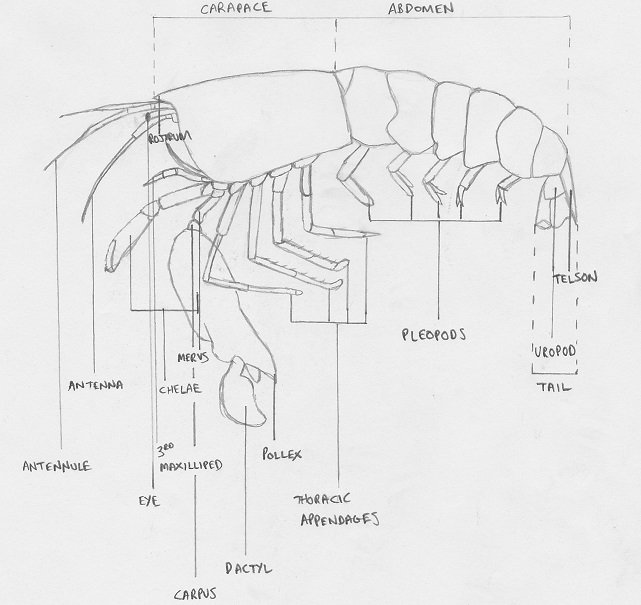External Anatomy

Generalized Alpheid shrimp external body plan representative of
Alpheus parvirostris. Drawing by Aidan Janetzki. Information adapted from Schram
et al. 2004.
Alpheus parvirostris have a typical shrimp-like body (caridean), thus describing of their external anatomy will be generalized given the species has not been fully described to date. As with all arthropods,
Alpheus parvirostris undergoes segmentation where its head is made up of five segments, the thorax has eight segments and the abdomen consists of six segments (Rupert
et al. 2004).
Alpheus parvirostris was found to possess a bilaterally compressed, cylindrical body with a well developed abdomen (Rupert
et al. 2004). Snapping shrimp possess both thoracic appendages (pereopods) and pleopods which are used for crawling and swimming respectively. Additionally, snapping shrimp have multiple sensory appendages (antennules, antennae & eyes) and a uropod (tail) which is used for backwards locomotion (Rupert
et al. 2004).